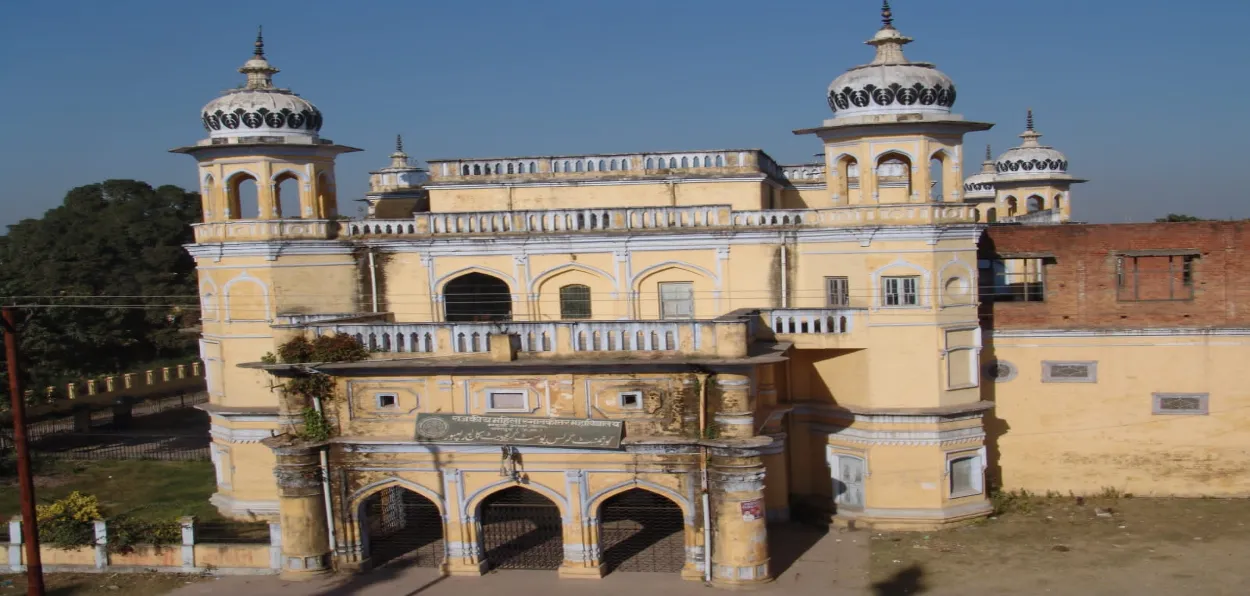
Sanam Ali Khan
The historical monuments of Delhi, Lucknow, Hyderabad, and Jaipur have received significant attention and have been beautifully restored. The Rampur city with many impressive and rich Indo-European architectural heritage monuments needs attention as well.
One such structure in the city is Machhi Bhawan, which is located in the Fort Complex. Its restoration could help pitch it as a cultural tourism destination of Uttar Pradesh. All the city monuments collectively could be pitched as a rich tourist destination and help generate revenue for the district.
The spectacular structure adds immense value to the historic character of the city that lies to the north-east of Qilla Maula. Its adjacent building which is known as Rampur Raza Library has been restored. But due to some reason, Machhi Bhawan has largely been neglected. Though it now has been converted to a Girls Government College.
The building houses an ancient fountain made of marble, has teak wood paneling on the walls, decorative old fireplaces, ornamented colourful tiles, curved wrought iron handrail, Belgian cut glasses, French chandeliers, and a terrace overlooking the garden that adds to it a distinct style. Many of these valuables have been broken and lost.
Talked to Syed Naved Qaiser, a scholar working on the Old monuments ofRohilkhand in Rampur Raza library, tells about the literature of the land he said “According to the preserved authentic written sources “We have seen the grand enlightening Durbar of Nawab Kalbe Alikhan in Machhi Bhawan’’.
Enlightening discussions used to take place here in the building among scholars from far and wide. Also, it is here that Nawab took a keen interest in the literary discussions amongst the learned scholars and noblemen. Several important decisions related to governance were taken here. Irrespective of religion or caste people of the city were allowed to enter and watch the proceedings of durbar.
In 1918, historian Najmul Ghani Khan published a two-volume history of Rampur “Akhbar-us-ṣanadid”
(accounts of Rohilla heroes). He describes Machhi Bhawan as the ‘Diwan-i-Khas’ of the reign of Nawab Qalbe Ali Khan Bahadur.
In his detailed account of the history of the Nawabs’ rule, he pays particular attention to the architectural marvels that came up during Nawab Hamid Ali Khan’s reign, it was during his tenure that beautiful structures were erected and defined Rampur as a modern beautiful city, where talent and skills were promoted.
Interestingly Nawab Hamid Ali Khan is also referred to as the Shah Jahan of Rampur thanks to his architectural and urban planning. He added noteworthy improvements to make the beautiful city.
Jahanara Habibullah, who belonged to the royal family has written a scintillating memoir about her days in the Rampur fort (Habibullah: 2001” Remembrance of Days Past Glimpses of a Princely State During the Raj).”
She says the architecture included huge open spaces and gardens. The Indo-European classical architecture was complemented by extensive Mughal-patterned gardens. The Nawab’s household occupied the Machhi Bhawan, styled like the Awadh palaces with their symbolism of the fish. Rampur originated as a princely state in 1774 as a result of the treaty signed with Awadh. The fish motif rose to eminence and quickly became the central element in Rampur's royal insignia, just as it was in Awadh. Since the fish symbolizes good fortune and prosperity, people also considered it an auspicious omen.
Nawab Hamidali Khan (1889-1930) became the ruler in 1889 at the age of 14. He transformed and expanded the city. The erstwhile princely state’s ruler particularly gave attention to the architectural creations as he had a keen eye for aesthetic and cultural production. Hamid Ali Khan appointed W.C Wright (French architect) as the executive engineer in the western provinces services (National Archives of India 1890) he developed buildings that symbolized the aesthetic and political authority of his patron.
The fort complexes were rebuilt as the core of this urban face-lifting and modernization with a mix of European architecture using local bricks and sand. many "modern buildings" such as railway stations, hospitals, courts, public gates, wide streets, and canal systems were erected to represent the progress of this so-called backward princely state. He also commissioned a “Rampur album” with 55 images of the city photographed by Albert Jenkins and others (India Office records).
ALSO READ: Assam's Dr. Imam Ali is living God for poor patients
The Machhi Bhawan palace is identified by its grand hall and galleries. It was converted into Govt Girls College. This Palace originally used to be the official residence of the Nawabs of Rampur.
The author is an Art conservator at Rampur Raza library.
